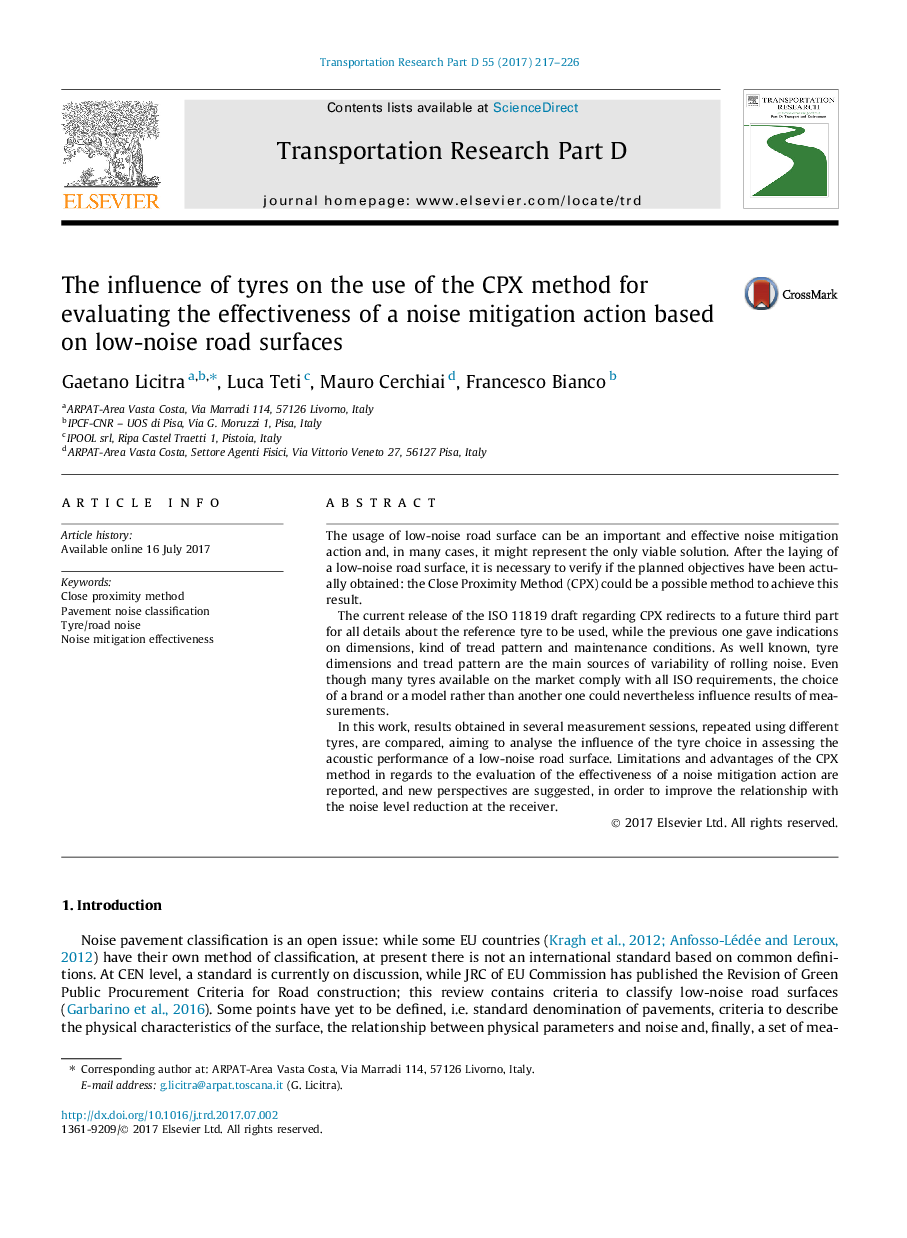| Article ID | Journal | Published Year | Pages | File Type |
|---|---|---|---|---|
| 5119376 | Transportation Research Part D: Transport and Environment | 2017 | 10 Pages |
â¢CPX results depend on specific tyre/road configuration.â¢Surface acoustic performances cannot be correctly evaluated using just one tyre.â¢CPX method allows to highlight the spatial homogeneity of an installation.
The usage of low-noise road surface can be an important and effective noise mitigation action and, in many cases, it might represent the only viable solution. After the laying of a low-noise road surface, it is necessary to verify if the planned objectives have been actually obtained: the Close Proximity Method (CPX) could be a possible method to achieve this result.The current release of the ISO 11819 draft regarding CPX redirects to a future third part for all details about the reference tyre to be used, while the previous one gave indications on dimensions, kind of tread pattern and maintenance conditions. As well known, tyre dimensions and tread pattern are the main sources of variability of rolling noise. Even though many tyres available on the market comply with all ISO requirements, the choice of a brand or a model rather than another one could nevertheless influence results of measurements.In this work, results obtained in several measurement sessions, repeated using different tyres, are compared, aiming to analyse the influence of the tyre choice in assessing the acoustic performance of a low-noise road surface. Limitations and advantages of the CPX method in regards to the evaluation of the effectiveness of a noise mitigation action are reported, and new perspectives are suggested, in order to improve the relationship with the noise level reduction at the receiver.
